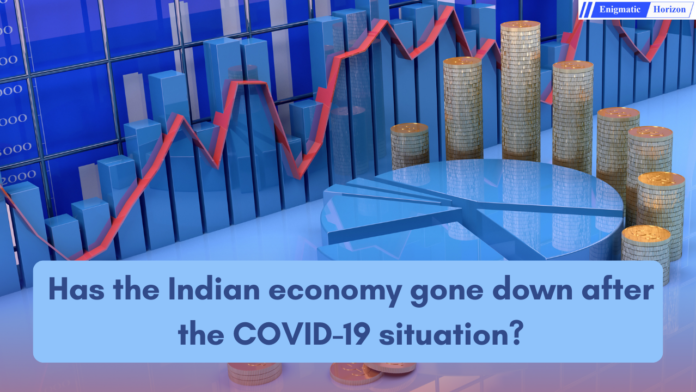Mohsin Khaiyam (Senior Sub-Editor)
The lockdown during the COVID-19 situation had the lives of many as well as the economy of the world shattered. On a similar note, India was also affected, with the GDP growth rate contracting by around 7.3 percent in 2020–21. This GDP was among the worst performances of the country in over four decades. It was not just a loss in the GDP sector; the COVID-19 situation also resulted in a massive loss in jobs and business in India. Many businesses were forced to close during the period as people had to live with their savings.
Even though the GDP dropped, it later rebounded to 8.7 percent in the financial year 2021–22. This was seen as growth from the previous drop. However, the damage was done, as many people were left nearly penniless. While the government took several steps to support the people effected by COVID-19, it still was not enough, as many ended up losing their savings.
When it comes to the question of whether the COVID-19 situation has had an impact on India’s economy, the statistics show that the nation has once again gotten back on track. But when you look at a small business owner or even a person who is looking to start a business, you will find that it was not the COVID-19 situation but the prevailing practises as well as the bank policies that had him hold back. While the government claims that they have released several opportunities for people who want to start a business, getting one such benefit is not easy.
Most of the banks in India do not issue business loans unless you have something to put in as security. And even if some banks do lend the money, it is tough to pay off the debt as the interest or even the EMIs are too high. Then again, we need to look at the inflation rate, which, as per some studies, is going up at a rate of 7.01 percent. This means people would not be able to afford things unless their income did not rise. Thus, if we exactly want to discuss the economy, we need to look into the market at a micro level.
In Guwahati, Assam, people saw certain examples of how the COVID-19 situation had effected some people. A few people had started food businesses on the streets of the city with some money they had managed from other work. As the lockdown hit the state, these people were forced to shut down their businesses. In a matter of days, they started consuming the little groceries they had. And in the mean gap of partial openings, they started to purchase groceries with the savings they had.
While the government had allowed a partial opening of food businesses, many people hesitated to open them, fearing that they might be at a loss again. Eventually, many, by the end of the lockdown, gave up and closed their businesses. Some of them got into alternative professions, while others are still jobless and are surviving by doing certain odd jobs.
Post-lockdown, Guwahati city saw a rise in taxi and delivery drivers, as these were the only jobs that did not require specific qualifications but only driving licences. Some of these people say that getting into business was risky, but being a part of it was easy. Many took out certain loans to buy motorcycles and started enrolling themselves with taxi and delivery aggregators. But these were only at a micro level, as many of these people were highly educated and, post-lockdown, failed to get a job.
So when we see the economy, yes, the country has achieved good data and statistics, but on the ground, people are still suffering to pay their bills. In just a matter of time, the price of fuel, electricity, and other commodities has gone up. People who belong to lower-income groups find it hard to make a living. Some even fail to meet their basic needs and have to cut off their diet. Many people say that they find it hard to buy most of their basic needs and even say that they have cut back on buying new clothes. These were certain examples.
The Indian economy in paper and media looks superb, but on the ground, people are fighting hard to survive even if they have money. A person now has to work even more if they want to live a good life and not just survive. Another aspect is the debt ratio. Although it is hard to identify the debt ratio of an individual, the Indian government has a high debt-to-GDP ratio, which currently stands at 89.3 percent.
This is not exactly a good sign of a good economy. If the number grows, the situation in the country will fall further, eventually leading to a crisis. As a result, there are many possibilities, and in the years to come, we will learn more about the effects of the COVID-19 situation.
